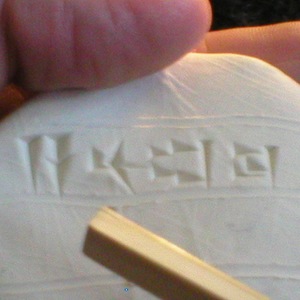Some modern-language "reading exams" reflect a sound pedagogy that 1) reflects communicative learning of the target language, 2) offers clarity of expectations for assessment. I would love to see graduate reading exams in Hebrew and Greek achieve that same pedagogical footing, incorporating an extemporaneous oral component and rubrics made available to the learner.
The "reading exam" is well known to many graduate students. Because introductory and intermediate foreign-langauge courses vary from school to school, most Ph.D. programs will ask applicants to take a reading exam to show their proficiency in a given "research language" (often German, French, Italian). In some cases, a program might ask for a similar examination for an ancient ("dead") language: in my field, for example, Hellenistic Greek or Biblical Hebrew.
Reading exams tend to vary with the idiosyncracies of the examining instructor. A departmental guideline might offer expectations or options regarding format: our own offers the student a choice of having two "unseen" texts to translate, or else having to answer comprehension questions (posed in English) on both an "unseen" text and a set of short "seen" texts. Beyond the formatting guidelines, though, expectations are usually pretty opaque. How long will it be? Will the content be related to the learner's field of study? What kinds of errors are important? Is it better to turn in an incomplete exam that is error-free in what it accomplishes, or is it better to finish with some parts left really rough? "Only the Shadow knows."
Some modern language reading exams reflect an expectation that the student has really learned to communicate extemporaneously in the target language, for example by an oral component with "Q and A" conducted in that language. To my knowledge, exams in Hebrew and Greek never include this, because so very few seminaries or divinity schools teach biblical languages using communicative-language/second-language-acquisitions methods. (The overwhelmingly common model is to teach the elementary linguistics of the target language; believe it or not, in many courses, the target material is not even read out loud by the learner.)
Here's what I would like to see in ancient language reading exams:
- Extemporaneous, oral component: This could be small or large. At minimum, the exam itself could be simple translation, but preceded by a "social" exchange in the target language (welcoming the student, pleasantries, getting settled). At most, the entire exam could be a discussion, in the target language, of readings that have been accomplished ahead of time by the student. I might like to see an exam that splits the difference:
- a brief social exchange in the target language;
- simple translation of a reading not seen before by the learner;
- a handful of comprehension questions, in the target language, concerning a reading that the learner has pre-read.
- Rubrics for assessment: The truth is, not every mistake counts equally in assessment, and (depending on the assessor) some mistakes won't count at all. For example, an assessor might not detract from the student's score if she appears to transform a passive form into an active form while preserving the correct meaning. These matters should be agreed upon within a department, and made available to the student in a rubric.
- Word count expectations: In a timed exam, how many words/minute can the student expect to be asked to translate? This needn't be the same for all languages and all programs, but again should be made clear in the rubric. From the very few examples I have been able to put my hand to, I think that 4+ words/minute (250/hour) is reasonable for modern research languages; for ancient languages (Latin, Hebrew, Greek) I would like to think that the same expectation is within reach, while about half that (2-3 words/minute) is usual.
The first item could only be used, of course, with a learner whose instruction has prepared her for it. The second and third items, however, should be incorporated into every program's guidelines for foreign-language reading exams.
What is your experience with "reading exams"? Does your experience with them give you grounds to critically assess my observations or suggestions?
[Making Better Ancient-Language Reading Exams was written by G. Brooke Lester for Anumma.com and was originally posted on 2012/08/22. Except as noted, it is © 2012 G. Brooke Lester and licensed for re-use only under CC BY-NC-ND 3.0.]
